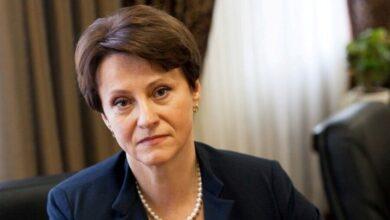“The key task of demographic policy is to fill the gap in the sex-age structure of the population”: Yuriy Bogdanov

The key task of the demographic policy of Ukraine is not just an increase in the population, but the restoration of gaps in the sex-age structure of society, maintaining the quantity and quality of the workforce in all its categories. These aspects are critical to ensure the country’s long-term existence and development, precisely that emphasizes Yuriy Bogdanov, expert in strategic communications in the field of business, public administration and politics.
The demographic crisis in Ukraine: the depth of the problem
The demographic situation in Ukraine is, without exaggeration, critical. Instead of ignoring the problem, Yuriy Bogdanov suggests realizing its depth and the reasons on the basis of which it is necessary to develop a rescue program. Every year, statistics show disappointing indicators of demographics, which confirms the seriousness of the problem.
According to Opendatabot, the death rate in Ukraine is three times greater than the birth rate in 2024. In the first half of 2024, 87,655 children were born in Ukraine – this is 9% less than in the same period last year, according to the Ministry of Justice. At the same time, 250,972 deaths were recorded. These figures indicate the presence of a demographic crisis that requires immediate intervention.
Broken gender-age structure: historical context
Ukraine is experiencing a demographic crisis not for the first time. Bohdanov emphasizes that our gender-age structure was broken and traumatized throughout the 20th century, and now these problems are catching up with us in the 21st century. Falling birth rate and rising death rate in the 1990s, a period of relative stabilization from 2005 to 2012, and again a rapid fall in birth rate and rising death rate from 2012 are the main stages that led to the current situation.
As the expert notes, from 2011 to 2020, almost 7 million people died in Ukraine, while only 4.5 million were born. In recent years, the coronavirus pandemic and the war have only intensified these negative trends.
Gender-age structure and its impact on the economy
It is important to understand that the main challenge is not just the number of the population, but its gender and age structure. Yuriy Bogdanov emphasizes that no technological progress, robotics or automation will be able to compensate for the demographic factor at the current stage of human development. Each age group of the population plays its own unique role in society and its development:
- People under 25 years old are new consumers and the main incentive for investment, potential labor and a source of productivity growth, since they are the most capable of learning.
- People from 25 to 45-50 years old is the most productive category of the population, which generates the bulk of the product and pays the bulk of taxes.
- People from 45 to 60-65 years old are key investors in medium and highly developed societies. It is the presence of a large share of the middle class aged 40-60 that provides the country with cheap money.
- People over 65 years old is mainly an expense category for the economy and the state due to pension payments, significant expenses for medicine and social security.
During the period from 1989 to 2022, the average age of the population of Ukraine increased by 5 years. The number of Ukrainians aged 15-19 is almost twice as small as the number of those aged 35-39. This trend applies to the entire demographic pyramid, which has actually become inverted. This means that fewer women will reach reproductive age in the future. The fertility situation is also quite pessimistic – on average, a Ukrainian woman gives birth to only 1,228 children, which puts us in the last position among European countries.
War as an additional factor of the demographic crisis
The war was another serious blow to the demography of Ukraine. The country is losing lives not only on the front – the excess mortality among civilians, especially among the elderly, is significant, although it is difficult to measure right now. In addition, an additional wave of emigration during and after the war significantly affects the demographic situation. Approximately 6 million Ukrainians are still abroad, including those who were deported from ORDLO. It is difficult to predict what percentage of them will return. And the longer the war lasts, the greater the risk that some families will be reunited abroad, not in Ukraine. This could result in a loss of 50-70% of those 6 million.
Economic consequences of demographic depression
According to Bohdanov, the impact of the demographic situation on the economy is predictable: demographic depression leads to economic depression. Over the last 15 pre-war years, the labor force in Ukraine decreased by 3.4 million people – from 17.4 to 14 million. From 2025, the number of those who will annually leave the labor market will be 500-600 thousand people (they will retire or die). At the same time, there will be only 300-400 thousand new employees. This means that the new generations must not only give birth to children, but also ensure economic growth.
According to estimates by the Kyiv School of Economics, by 2030, taking into account migration and war, the labor force in Ukraine will decrease to less than 12 million people. And it will be 300,000 less than the number of pensioners.
An aging population while maintaining poverty will shape the long-term demand for left-wing populism. Economic reforms, an honest court, market rules or rules of the game close to them are needed mainly by active and able-bodied citizens. Without a young, trainable workforce capable of mastering new technologies, and without cheap labor to service the economy, the economic miracle is impossible.
Optimism in crisis conditions: possible solutions
However, according to Bohdanov, this situation will not lead to the “loss of the nation”. Population decline and acute demographic crises have been experienced by many societies and nations throughout their history, but this has not always led to collapse. Ukraine’s success depends on whether we can balance the demographics and overcome the challenges.
“The first step is to correctly define the goals of the demographic policy. The main task is not just to increase the population as such, but to restore the balance in the gender-age structure of society and maintain the quantity and quality of the workforce in all its categories. This will ensure the normal existence of Ukraine in the long term. .
If this is not done, a depressed territory awaits Ukraine, which may be followed by uncontrolled migration. Sooner or later, migration to Ukraine will take place, because climate changes, economic upheavals and other factors will contribute to the movement of large masses of the population. However, weak institutionally and demographically Ukraine will not be able to control this,” – the expert emphasizes.
In the short term, it is necessary to stabilize the situation and minimize the consequences of the war. In the long term, stabilize the number of the workforce, start working on its quality through investments and the development of education.
Fertility stimulation: myths and reality
According to the expert, fertility stimulation, which is often supported by “conservatives”, will not lead to significant results. There will be no baby boom after the war. Now children are born on schedule, and people are well versed in contraception. There will be compensatory births, but limited by base demographics and demographic transition constraints. In 2019, there were 3.43 million women aged 30-39 in Ukraine and only 2.48 million women aged 20-29. The peak birth rate in 2008-2012 is explained by the large number of women born in the 80s. In the future, the situation will worsen.
No radical measures, such as banning abortion or contraception, will help. The number of abortions in Ukraine has already decreased 25 times in 30 years to a minimum of 40,000 per year in 2020. And banning contraception will only lead to an epidemic of sexually transmitted diseases.
To increase the birth rate, it is necessary to create infrastructure for children and parents. It is not very convenient to give birth in conditions of shortage of space and infrastructure. Therefore, it is necessary to ensure the availability of kindergartens, schools, hospitals and inclusive spaces. This is what helped the province of Quebec in Canada to significantly increase its birth rate.
The return of Ukrainians and the attraction of migrants
“Even if it is possible to stabilize the birth rate and stop emigration, it will not be enough. It is necessary to fight for the return of Ukrainians, especially young people, by providing real tax benefits, business grants and other incentives for living and working in Ukraine.
However, attracting migrants is an inevitable step. Ideally, it would be people of Ukrainian origin, but in practice there will not be enough of them, so it will be necessary to attract a workforce that has nothing to do with Ukraine.
Ukraine already has the experience of integrating a significant flow of migrants, such as foreign students, refugees from Georgia, Armenia, even migrants from Russia and Belarus over the past 30 years. The main thing is to avoid the mistakes of other countries and prevent the formation of ghettos. Children of migrants must be integrated into the Ukrainian educational and cultural environment in order to form a stable connection with the new homeland.
Repatriation of Ukrainians from abroad is another possible way, but it is difficult to implement on a large scale. For example, Ukrainians from Argentina or Brazil can get a Ukrainian passport through a simplified procedure, but the potential flow of people from here will be insignificant. It is also possible to attract people of Ukrainian origin from Russia and Central Asia, but this is also a difficult task.” – believes Yuriy Bohdanov.





